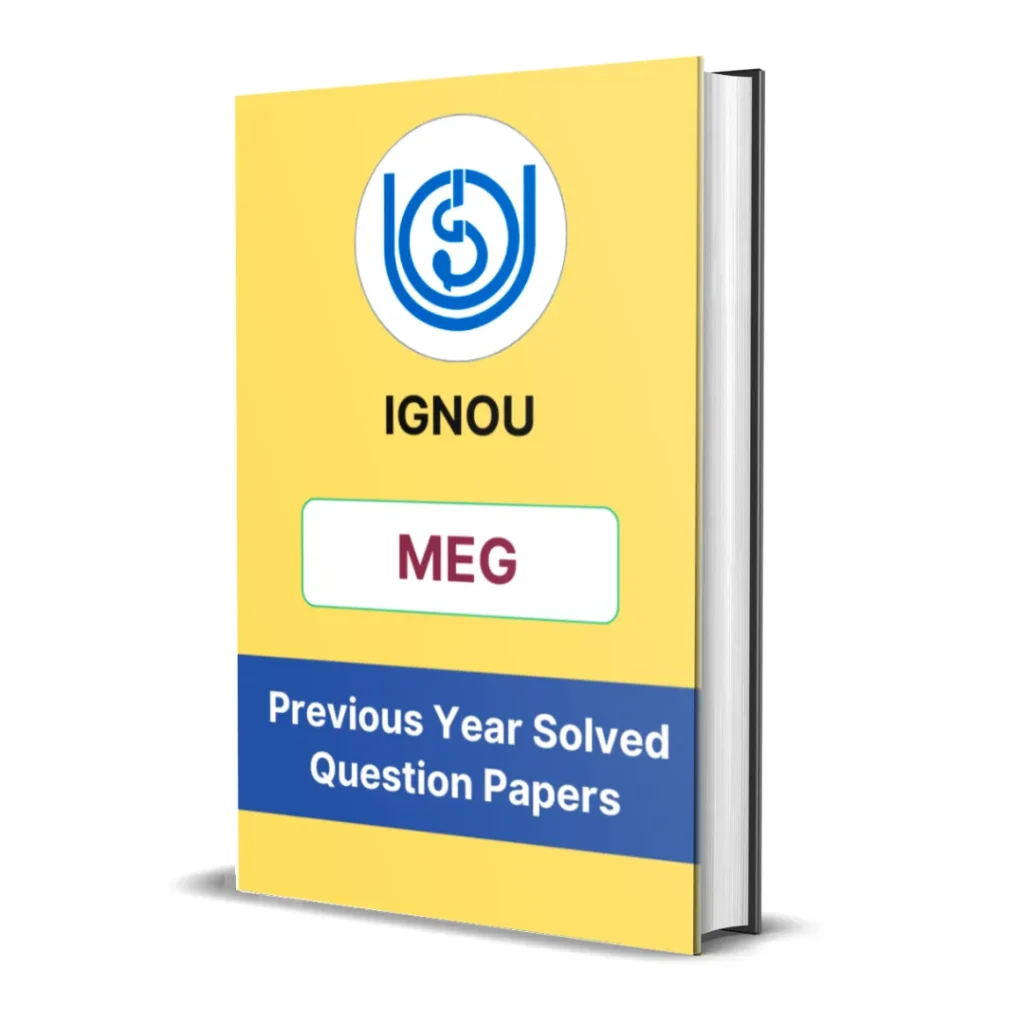IGNOU MEG-05 Block 4 Summary | New Criticism
- Last Updated On August 14, 2025
Table of Contents
Here you will get the detailed summary of IGNOU MEG 5 Block 4 – New Criticism.
We have provided the summary of all units starting from unit 1 to unit 6.

Introduction
IGNOU MEG-5 Block 4 focuses on New Criticism, an influential literary critical movement that emerged in the early to mid-20th century, primarily in Britain and the United States. It marked a shift from historical, biographical, or author-centric readings of literature to a more text-based, objective, and close analytical approach. New Critics emphasized the autonomy of the literary work and advocated for a methodical, formalist analysis of its language, structure, and meaning. The six units in this block introduce students to key figures like I.A. Richards, T.S. Eliot, F.R. Leavis, Cleanth Brooks, John Crowe Ransom, and W.K. Wimsatt, each of whom contributed to shaping New Criticism into a disciplined, methodical approach to understanding literature.

Unit 1 – I. A. Richards
I.A. Richards is considered one of the foundational figures of New Criticism. His work laid the groundwork for close reading and emphasized the psychological and linguistic responses to literature.
Key contributions:
-
Introduced the concept of “practical criticism”—the analysis of poems without reference to the author’s biography or historical context.
-
Distinguished between:
-
Sense (literal meaning)
-
Tone (speaker’s attitude)
-
Intention (purpose)
-
Feeling (emotional content)
-
-
Believed poetry helps balance conflicting impulses and contributes to emotional and psychological well-being.
-
Emphasized the reader’s response as crucial in interpreting a poem, yet grounded in textual evidence.
Richards’ focus on how a poem functions internally, without relying on external context, was foundational to the development of New Criticism as a formalist approach.

Unit 2 – T.S. Eliot
T.S. Eliot’s critical writings played a crucial role in establishing New Critical ideals, particularly through his impersonal theory of poetry and historical perspective.
Major ideas:
-
“Tradition and the Individual Talent”:
-
Advocates for the impersonality of poetry—the poet should separate personal emotions from the poem.
-
Emphasizes the importance of literary tradition and the poet’s relationship to it.
-
-
“Objective Correlative”:
-
Argues that emotion in art must be expressed through an objective set of facts, not directly stated feelings.
-
-
Emphasized the need for order, discipline, and structure in poetry, often reacting against the chaos of Romantic expression.
Eliot’s ideas introduced a rigorous, intellectual approach to literature, blending classical restraint with modernist insight, which aligned closely with New Critical principles.
Unit 3 – F.R. Leavis
F.R. Leavis was a leading British critic who championed moral seriousness, cultural responsibility, and literary excellence.
Key points in Leavis’s criticism:
-
Emphasized the role of literature in shaping and reflecting moral values.
-
Valued writers who demonstrated “life-affirming seriousness”, such as George Eliot, Henry James, and Joseph Conrad.
-
Believed in a “great tradition” of English literature based on moral insight and linguistic precision.
-
Strongly critical of popular and commercial culture, which he saw as a threat to literary and cultural standards.
Though not a New Critic in the American sense, Leavis’s emphasis on textual integrity, rigorous close reading, and moral judgment made his work resonate with New Critical ideals.

Unit 4 – John Crowe Ransom and Cleanth Brooks
This unit introduces two central American figures in New Criticism who established its methodology and academic authority.
John Crowe Ransom
-
Coined the term “New Criticism” in his 1941 essay collection.
-
Advocated for poetry as an autonomous verbal object, distinct from biography or history.
-
Emphasized formal analysis, focusing on irony, paradox, and tension.
Cleanth Brooks
-
Authored “The Well Wrought Urn”, which remains a key New Critical text.
-
Argued for the unity of poetry—all elements should contribute to a single, coherent structure.
-
Famous for promoting concepts like:
-
Irony
-
Paradox
-
Ambiguity
-
Both critics believed poetry should be approached as a self-contained system of meaning, and interpretation must emerge from close textual analysis, not outside information.

Unit 5 – W.K. Wimsatt
W.K. Wimsatt contributed significantly to the theoretical framework of New Criticism by identifying and critiquing certain fallacies in literary interpretation.
Two of his most influential concepts:
-
Intentional Fallacy:
-
Warns against interpreting a text based on the author’s intention.
-
Argues that meaning lies within the text, not in the author’s mind or biography.
-
-
Affective Fallacy:
-
Rejects evaluations based solely on the emotional response of the reader.
-
Argues that the emotional effect should not determine the value or meaning of a poem.
-
Wimsatt emphasized textual objectivity and argued that criticism must be disciplinary, evidence-based, and linguistically grounded.
Unit 6 – Conclusion
This unit synthesizes the major ideas and contributions of New Criticism while also addressing its limitations and critiques.
Summary points:
-
New Criticism introduced methodical close reading and focused on formal properties of the text.
-
It contributed to the professionalization of literary studies, especially in academic institutions.
-
Strengths:
-
Promoted disciplined analysis.
-
Encouraged a focus on literary form, structure, and meaning.
-
-
Limitations:
-
Ignored historical, political, and cultural contexts.
-
Marginalized the author’s and reader’s roles.
-
Lacked inclusivity and awareness of social issues.
-
Despite these criticisms, New Criticism remains a foundational moment in literary theory, having reshaped how literature is taught and analyzed in modern academia.